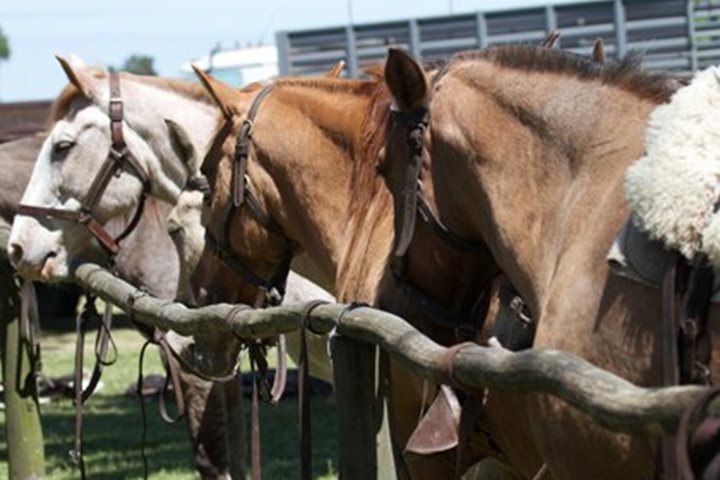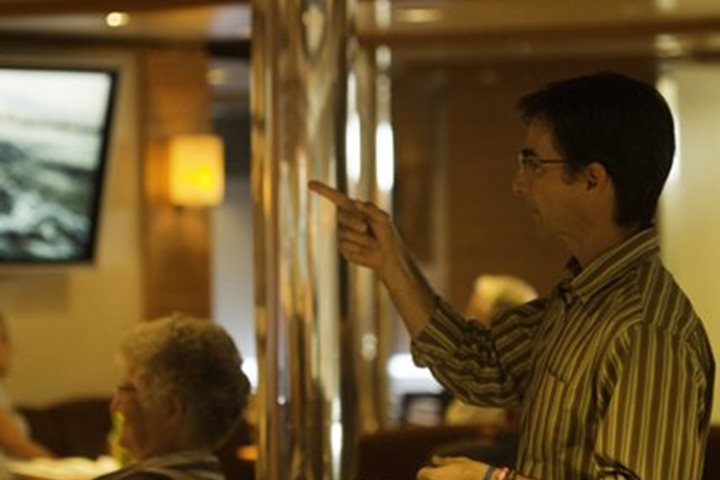This proved to be an amazing day at sea as we continued making our way southward off the coast of Brazil. Morning started off with cool ocean breezes and a warm sun, which made nearly perfect conditions for watching the masked and brown boobies escort the ship through flying fish territory. Yes, they were following along with us waiting for flying fish to get stirred up by the ship’s subsurface pressure wave. Some people cheered for the boobies on the hunt and others cheered for the fish trying to escape. Whichever one rooted for, it was very exciting to watch. A few other interesting creatures were observed during the morning, including several other species of seabirds, bottlenose dolphins (who approached the ship for some bow riding), and a couple humpback whales off in the distance…a prelude of things yet to come.
By midday, we were relatively close to the Abrolhos Archipelago, a protected marine reserve belonging to Brazil. The islands are very low, sandy, and rocky structures, and we had to remain outside the boundary waters, all of which made it impossible to actually see the islands from the ship. The reserve is a very important wintering area for humpback whales. We could tell from the clear, blue waters that this region of the ocean is nutrient-poor and supports little in the way of food for the whales. But, food is not what they are after here…the whales use these warm waters for courting, mating, and giving birth. This is one of the areas where male humpback whales produce their famous haunting songs, most likely as serenades to the ladies.
The pregnant females give birth soon after arriving here in the Austral autumn, then immediately begin lactating in order to fatten up the youngsters in time to head back south (with their offspring in tow) to the cold Antarctic waters, where plentiful food can be found during the short summer. The young whales must grow fast and develop thick insulating blubber layers before reaching Antarctica. When the adult females return to the Abrolhos Archipelago the following winter, they will most likely be ready to ovulate and mate again, but the nearly year-long gestation period assures they won’t give birth for another year; that is, not until they return to the warm, tropical Brazilian waters exactly two years after the previous baby was born.
As hoped for, we encountered many humpback whales this afternoon. This included individual adult whales, mothers and calves, and a few trios of animals including two adults and one calf. Much of the afternoon was spent watching whales. Actually, the whales must have found us a curiosity, because they were watching us as well, and approached the ship several times to have a closer look. In the accompanying photograph, one can see three whales (two adults and a calf) right next to the ship. They purposely swam over to the ship and then cruised alongside our vessel, spraying the guests on starboard side with their blows. People were cheering and yelling to the whales as they looked up at us. It was awesome! Many more whales were sighted during the remainder of the day, but we needed to keep on track in order to reach our pilot station in good time in a couple days in Rio de Janeiro.







